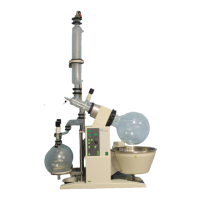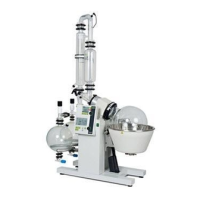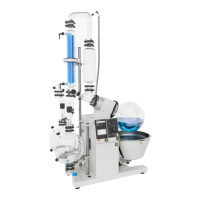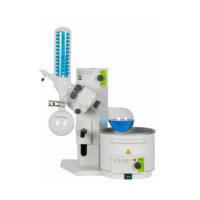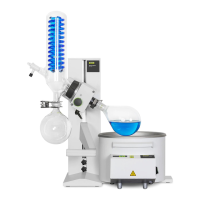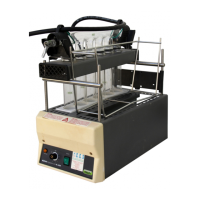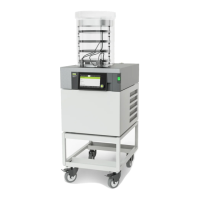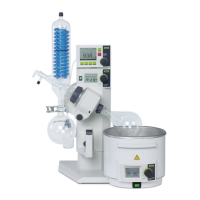
Do you have a question about the Buchi R-210 and is the answer not in the manual?
| Brand | Buchi |
|---|---|
| Model | R-210 |
| Category | Laboratory Equipment |
| Language | English |
Specifies that only laboratory personnel with appropriate training should operate the instrument.
Describes the intended applications of the Rotavapor, such as distilling and vaporizing solvents.
Lists forbidden applications and highlights risks associated with improper operation of the instrument.
Explains the meaning of WARNING, ATTENTION, and NOTE symbols to alert users to potential hazards.
Discusses residual dangers from the instrument and the manufacturer's responsibilities.
Highlights specific hazards like hot surfaces, electrical hazards, and potential implosion risks.
Warns about hazards related to solvents, such as peroxide formation and flammability.
Advises on essential safety measures, including wearing personal protective equipment.
Details safety features integrated into the electronics, parts, and glass components.
Outlines operator responsibilities, maintenance duties, and policies regarding modifications.
Presents a comprehensive table of technical specifications for the Rotavapor and heating baths.
Explains the fundamental process of evaporation and condensation under vacuum using a Rotavapor.
Details the evaporation area and the rotation drive mechanism as part of the functional principle.
Identifies and explains the main controls, displays, and operational buttons on the instrument.
Describes the motorized jack's function for raising and lowering the evaporating flask.
Provides guidelines for selecting a stable, horizontal, and fume-hood-equipped installation site.
Details precautions for making safe electrical connections, emphasizing earthing and correct voltage.
Instructions for placing and connecting the heating bath onto the base plate of the Rotavapor.
Explains the procedure for securely mounting the vacuum controller onto the Rotavapor.
Details the electrical cable connections between the vacuum controller and the Rotavapor unit.
Outlines procedures for performing functional tests, including vacuum tightness and rotation speed.
Explains how to access and adjust various settings related to the heating bath's operation.
Details the steps to set the desired temperature for the heating bath operation.
Explains how to adjust the immersion angle of the evaporating flask for optimal performance.
Describes how to use the quick-action jack to safely position the flask in the heating bath.
Provides guidance on optimal settings for cooling water, bath temperature, and vacuum.
Outlines the essential steps and conditions required to start and perform a distillation process.
Explains how to adjust parameters to improve distillation efficiency and condensation.
Lists common malfunctions, their possible causes, and corrective measures for self-correction.

